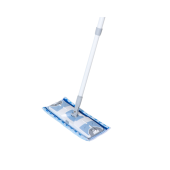Better systems lead to better results, especially for growing companies. A strong procure to pay (P2P) software is one of the best ways to speed up procurement and track indirect costs.
But how can you optimize procurement and purchasing? What makes a good procure-to-pay process? How can procurement automation keep costs under control as you grow?
We’ll examine a successful purchasing workflow to answer these issues. Best methods to streamline the process will also be covered. We’ll conclude with how procurement automation can streamline your procure-to-pay process.
Procure to pay?
P2P is how a company finds, requests, and pays for its items, products, and services.
The procurement function goes beyond procure to pay. It emphasises purchase, reconciliation, and vendor payment.
Procure to pay excludes strategic sourcing, lifecycle reviews, vendor off/onboarding, and supply chain management.
Purchase-to-pay automation software works how?
Procurement automation software automates item selection and invoice payment.
The front-end cloud-based technology centralises supplier orders and automates buyer purchasing. Users browse a selected catalogue from recognised suppliers.
They then order the things they require within system budgets and restrictions. The dynamic system lets administrators specify user, department, category, and location expenditure rules.
Procure-to-pay software automates several tedious tasks backend. Catalogue purchases require approval. After purchases are delivered, AI and machine learning automatically route, reconcile, and pay thousands of invoices without worker involvement.
Why Purchase-to-Pay software?
Organisations can streamline purchase and payment with procurement software. This is crucial when firms grow and order volumes and complexity increase.
Fully-featured P2P systems help procurement teams:
Automation: Many procure-to-pay steps are repetitive and manual. Teams that perform these operations manually slow down processing, increase errors, and drastically raise transaction costs. P2P software addresses all these concerns and provides a scalable solution so teams can focus on value generation. Automation decreases the workload of accounting and procurement team members as procurement workloads rise beyond 10%.
Accuracy: Manual P2P processing can cause errors and delays. Manual data input, invoice routing, and payment reconciliation lead to errors, wasted time, extra expenses, and vendor distrust. Automation using P2P software provides fast, accurate transactions.
Scalability: P2P software scales well with providers and transactions. Software automation lets managers create expenditure restrictions by user, department, category, or location instead of manual data entry, invoice routing, and payment reconciliation.
AI enhancement: P2P software’s AI and machine learning enable more frequent payments. They also provide dashboards or reporting to help teams monitor their procure-to-pay process in real time and make improvements. This manages procure-to-pay proactively.
Digitization: Automated P2P software allows the accounting staff to centralise invoices and vendor information from any source, including internet, email, paper, and phone orders. These automation tools help companies abandon inefficient paper bookkeeping. Even while digital invoicing has improved, roughly half of invoices are still received manually.
9 effective procure-to-pay steps
A standardised, consistent procure-to-pay procedure in your company is invaluable.
Simplifying workflow minimises maverick expenditure, speeds up procurement, improves order and supplier management, and boosts stakeholder productivity and satisfaction.
General procure-to-pay flow:
- Identify a business need: Stakeholders need products and services to do their jobs. They may assess services or choose the best solution.
- Request the item/service: The stakeholder submits a requisition or intake form to buy items. Requisitions start approval and procurement processes.
- Request approval: All relevant stakeholders and departments approve the request through a regular process. Finance funds the acquisition.
- Create a purchase order: After approval, the stakeholder creates a PO to buy the products. This PO includes everything needed for order processing and delivery.
- Receive purchase order approval: After the requisition is approved, the PO should be reviewed and approved. This reduces errors, clarifies requirements, and streamlines procurement and reconciliation. The provider fulfils the PO after approval.
- Supplier delivers the order. The receiving party reviews the delivery for accuracy versus the order. If the goods don’t match the order or meet quality standards, the recipient may reject it.
- Evaluate vendor performance: Perform a vendor performance review after receiving and reconciling products. It should assess delivery time, order accuracy, product quality, and more. This review can identify concerns for future purchases.
- Complete invoice approval: A three-way matching process ensures the delivered products match the purchase request, purchase order, and invoice. Accounts payable can process invoices after invoice matching.
- Pay the supplier: The procure-to-pay procedure ends with supplier payment. The supplier receives the agreed payment per purchase order or contract. Payment of invoices on time might earn the company early payment discounts.
3 procurement-to-payment best practices
Three powerful best practices can boost corporate procedures, outputs, and purchase and payment.
1. Make every buy approval process standard.
Formalising goods requests and purchases balances an organization’s requirement for control and compliance with its desire to help staff and avoid stifling progress.
A recorded procure-to-pay:
- Makes it easy for employees to receive what they need. It helps employees stay productive and supported.
- Maintains purchasing supervision and budget and departmental compliance.
- Reduces hazards of working with unapproved vendors or making out-of-process purchases.
- Increases visibility, lowers redundancy, and lets finance track, analyse, and forecast spending.
The process need not be complicated. It should outline the approval process and requestor expectations. Best practices are straightforward to establish, track, and repeat for every transaction, improving the procure-to-pay cycle to assure ongoing improvement.
Required purchase approval steps include:
- A conventional requisition or intake form with all essential information
- A contact or process owner to start requisition and approval
- Clear approval criteria for each purchase
- Tracking and documenting requisitions and orders throughout the process
- After financial closure, evaluate purchases, develop supplier relationships, and offboard vendors from service.
2. Define contract and departmental requirements
Purchase requisitions may have standard standards for each approving department. To reduce risk and ensure excellent procurement, these requirements are necessary. Stakeholders and buyers must know these requirements to meet them. Each organisation and strategy has unique criteria, but they are crucial to the decision-making process and request outcome.
Departmental requirements may include:
- Internal department lead: Based on tech stack or other partnerships, department management may pick vendors or integration partners.
- Legal: General counsels utilise specific words or provisions to enforce contract rights and cover common issues like SLA, downtime, disaster recovery, arbitration, etc.
- Security: Information systems departments commonly request supplier questionnaires to evaluate security and risk management thresholds.
- Finance: For planning and forecasting, Finance may request preliminary budget estimates or project milestones early on.
Document these requirements in one place for easy approval.
Including departmental requirements in the intake process helps stakeholders meet them before a request is submitted. This lowers friction, delays, and ensures high-quality with every firm buy.
3. Consider automation
As companies grow, purchasing and contract management for dozens or hundreds of vendors rise tremendously. The manual procure-to-pay procedure can quickly become inefficient.
Consider automating the repetitious and tedious purchase-to-pay process instead of adding staff.
Using procurement and AP automation can improve buyers’ buying experience and reduce team and department stress. It can free up these crucial teams to perform higher-value tasks in the organisation.
Selecting procure-to-pay software
P2P software sells mostly on features and usability. Consider tools that meet these functionality, convenience of use, and reporting criteria:
- Automatic invoice processing and matching: Three-way matching is a good start, but search for further ways to check and match invoices to procurement operations.
- Simplified approval processes: Departments and buying leaders must support the procurement process. Automated approvals simplify purchase viewing, research, and approval.
- Reporting: Dashboards and customisable reporting options ease important metric visualisation and spending story interpretation.
- Integration potential: Every system is more valuable when it can communicate with other software. A solid P2P system can integrate with enterprise apps.
5 top procure-to-pay software alternatives
1. Order.co
Order.co offers simple, powerful, and adaptable procure-to-pay features for all sizes of enterprises. A dynamic, curated catalogue, AI product substitution, role-based permissions, extensive reporting, vendor-agnostic cart and ordering, preferred advance financing, and full transaction capture for catalogue and off-catalog spend are available.
Pros:
- Up to $500,000 in preferred advance expenditure with universal terms and easy funding decisions.
- Single vendor payment through consolidated invoicing makes payments easy to process.
- Curated catalogues with dynamic role and location management to ensure policy-compliant spending.
- Product pricing and contract access like a GPO without restrictions
Cons:
- Order.co is for indirect spend management, not RFP/bid raw material purchases.
- Order.co does not sell software licences, but its new off-catalog expenditure features let consumers pay for subscriptions with an easy virtual procurement card.
- Occasionally slow loading platform screens, however the development staff works hard to fix them and speed up the site.
2. PRM360
Mid-market and big enterprises use PRM360, a cloud-based procure-to-pay system, to automate ordering and procurement.
Pros:
- The platform is simple and fast for onboarding and self-service.
- Flexible and scalable workflow creation and customisation
Cons:
- As with many systems, complex orders may temporarily impede purchasers.
- PRM notifications can make it challenging to acquire current information.
- Teams cannot log in simultaneously.
3. Coupa Purchasing
From RFP generation to invoice payments, this Coupa digital management solution helps organisations handle purchasing. It simplifies buying and submission with a guided workflow.
Pros:
- Very fast and versatile system for large enterprises seeking performance.
- Allows non-finance users to create and submit purchase orders and requisitions.
- Works with other Coupa financial management suite components
Cons:
- High learning curves need time from new users.
- Reporting functionality is less flexible than other options; workarounds help but require better.
- Complexity and cost make it unsuitable for smaller firms.
4. SAP Ariba
SAP P2P provides flexible enterprise resource management solutions. Cloud-based solution organises buy process, controls budgets and spend, and manages cash flow through directed spending.
Pros:
- An adaptable solution for SAP-savvy teams
- Strong integrations to centralise data
- A good choice for enterprises that need a modular, central system.
Cons:
- The UI isn’t intuitive, therefore new users will need to master the system.
- Customer service isn’t always helpful.
- Similar to Coupa, the system favours larger companies.
5. JAGGAER
P2P processing is available on the world’s leading independent spend management company’s small-business and mid-market platform. It integrates well with resource planning and finance systems.
Pros:
- Beginner-friendly, intuitive navigation for power and casual users
- Centralised vendor information system speeds procurement.
- A complete solution for all sizes of enterprises
Cons:
- Slow update roadmap causes bugs and usability difficulties.
- Reporting features and flexibility need enhancement.
- Unusable PO development features in the system
How to integrate P2P software with accounting
An automated e-procurement system improves your entire P2P operation. By centralising purchases, you meet organisational requirements and simplify daily tasks. A unified data source and basis for fully automated AP is created when the correct solution interfaces with other budget and finance planning tools.
A good P2P solution will:
- Follow budgets, purchasing criteria, and approved vendor lists.
- Optimise supply chain management for multi-location orders
- Reduce invoice exceptions and expense per invoice.
- Consolidate invoices and payments to boost cash flow.
- Find procurement savings to boost profits.
- Real-time, line-level purchase data visibility improves spend efficiency.
Procure-to-pay software boosts team productivity and purchasing quality. It can also significantly cut waste and cost in your company.














